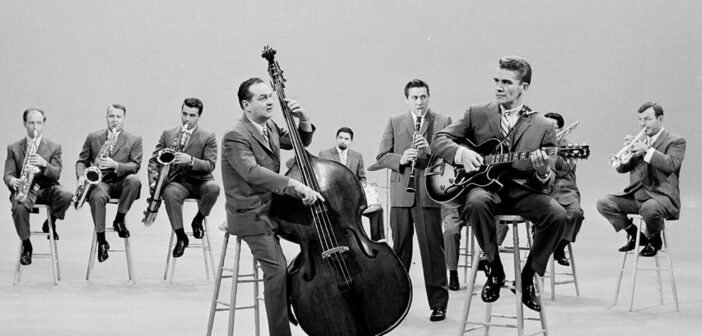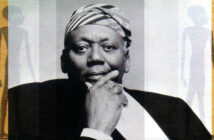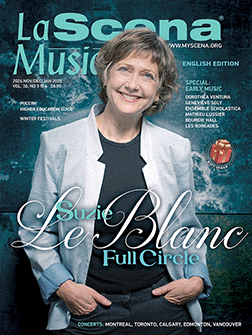
This page also available in / Cette page également disponible en français
The field of jazz has its share of stories about musicians who died young, but there are also those who lead long and productive lives, some fortunate enough to reach a ripe old age and receive due praise for their accomplishments.
In this era of smoke-free clubs, more jazz figures than ever are pushing well into their 90s, a handful of them even shattering the centenary mark. In case you wondered, the oldest living jazzman today is Ray Anthony, the last of the swing era big-band leaders, now in his 102nd year.
Enter Phil Nimmons, the first jazzman in Canada to reach that milestone. To feature him on the cover of this publication is all the more timely, as this issue makes its way to his Toronto homestead on his birthday this month, June 3 to be exact.
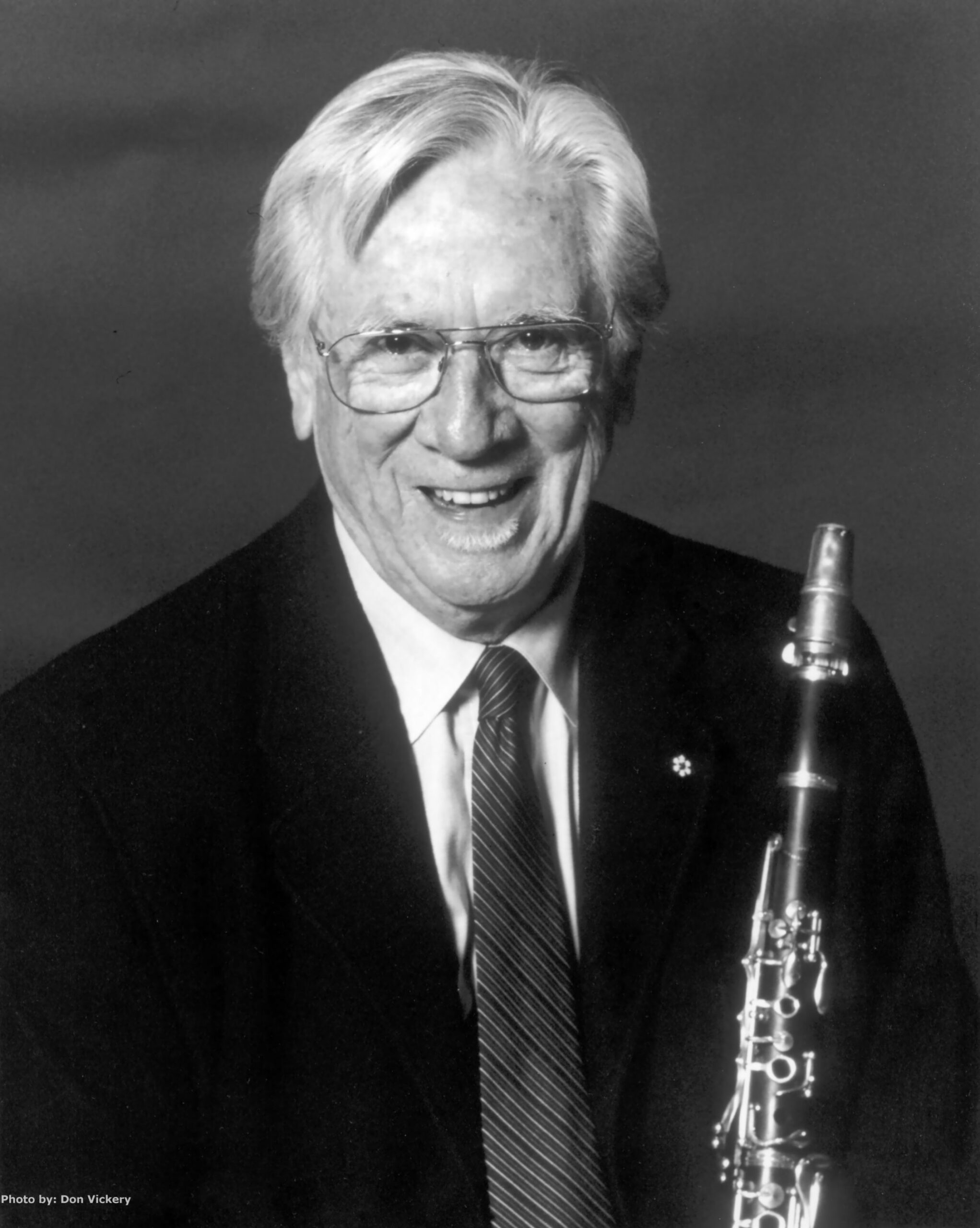 Hailing from Kamloops, B.C., Nimmons headed east in 1944 to study at the Juilliard School of Music in New York, a time spent learning his instrument, the clarinet, then being tutored in composition and arrangement. In a career spanning more than seven decades, he is nothing short of a household name in local jazz circles and beyond. Dedicated to the music he loved so much from his earliest days, Nimmons has contributed enormously to its development in Canada, first and foremost as an educator, but also as a composer, arranger and virtuoso instrumentalist.
Hailing from Kamloops, B.C., Nimmons headed east in 1944 to study at the Juilliard School of Music in New York, a time spent learning his instrument, the clarinet, then being tutored in composition and arrangement. In a career spanning more than seven decades, he is nothing short of a household name in local jazz circles and beyond. Dedicated to the music he loved so much from his earliest days, Nimmons has contributed enormously to its development in Canada, first and foremost as an educator, but also as a composer, arranger and virtuoso instrumentalist.
Long before institutions of higher learning admitted jazz in their classrooms, he actually pioneered the teaching of the music in Canada when he started the Advanced School of Contemporary Music (ASCM) in 1960, an initiative spearheaded by him and the most famous of all our Canadian jazz sons, Oscar Peterson. When asked about his first meeting with the famed pianist during a lengthy zoom conversation, Nimmons’s recollections are sharp.
Oscar and Me
“There were two jazz spots back then in Toronto called the Town Tavern and the Colonial Tavern, the latter where I saw him for the first time in 1950. Harry Freedman (the English hornist and composer) brought me to that show; he was the first musician I met there. He had spent time in Montreal, so he knew him. That was the beginning of a beautiful friendship, as they say.”
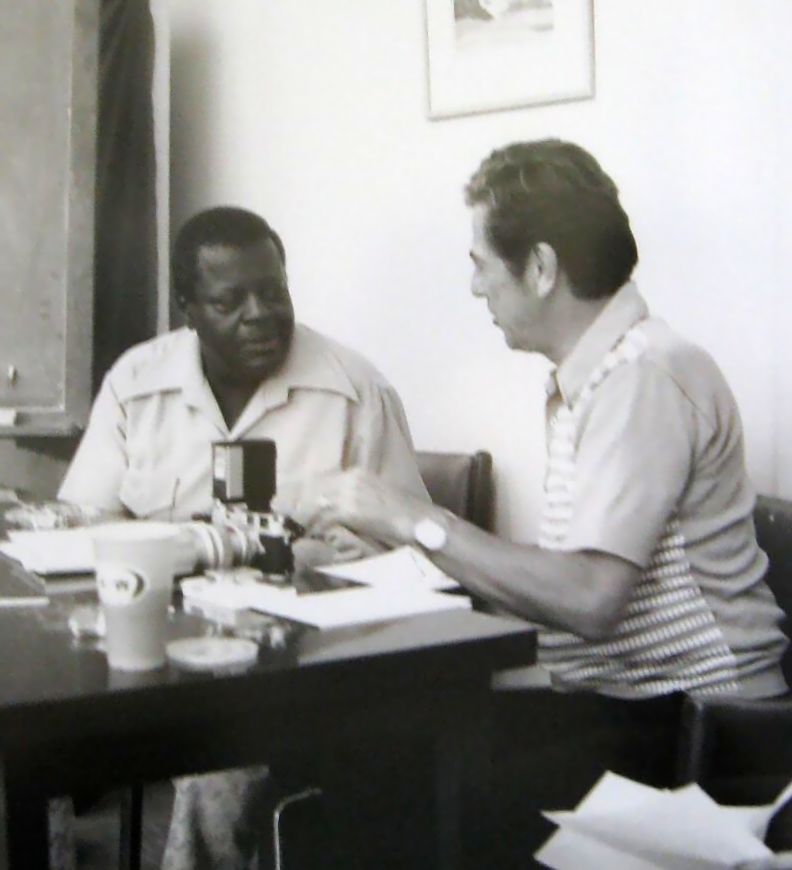 Until Peterson’s death in 2007, the two men stayed in touch, though their lifestyles could not be more different. Peterson conquered the world with his artistry; Nimmons, on the other hand, stayed close to home, as a staff arranger and composer for the CBC. Asked whether he had ever wanted to take the leap onto the international stage as Peterson did, Nimmons admits he considered it but says circumstances prevented it, what with all of his studio duties and the benefits of a family life that was far more stable than that of his globetrotting friend. If one thing bound the two men together, however, it was a shared commitment to impart their wisdom on others.
Until Peterson’s death in 2007, the two men stayed in touch, though their lifestyles could not be more different. Peterson conquered the world with his artistry; Nimmons, on the other hand, stayed close to home, as a staff arranger and composer for the CBC. Asked whether he had ever wanted to take the leap onto the international stage as Peterson did, Nimmons admits he considered it but says circumstances prevented it, what with all of his studio duties and the benefits of a family life that was far more stable than that of his globetrotting friend. If one thing bound the two men together, however, it was a shared commitment to impart their wisdom on others.
Jazz studies are a given in conservatories and music faculties these days, but that only came into being in the 1970s. Before that, jazz was learned on the bandstand after hours or in recording studios, as was the case for Nimmons, whose desire to pass on knowledge was such that he almost single-handedly brought the music into the classroom. In fact, he was ahead of the curve when both he and Peterson teamed up to open the ASCM in 1960.
“With Phil, it was always the joy of making music, and I think that comes across in his compositions.” Josh Grossman, Artistic Director, TD Toronto Jazz Fest.
ASCM, U of T and BSM
“Before the opening of that school, Oscar and I had done some teaching,” Nimmons recalls. “My younger sister Arlene and her husband lived in Fredericton, where there was a summer event called Chamber Music and All that Jazz. We were invited there one year to do just that—to be jazz instructors. That led us to creating the ASCM, and we hired Oscar’s bandmates Ray Brown and Herb Ellis, then Ed Thigpen, to the teaching staff. We were all keen on making this work in Canada, but as a private entity it was not sustainable; we simply ran out of funds and had to call it a day in 1964. Not only that but Oscar was so in demand as a performer and recording artist that it was hard for him to be as involved in it as I was.”

Credit: M. Miller
Ten years would pass before another opportunity presented itself to Nimmons, this time at the behest of John Beckwith, dean of the music conservatory, who put him in charge of its stage bands. Thus began a lasting term of employment that allowed him to lay the foundations of a full-fledged jazz program at the University of Toronto, directing it till Y2K, the year he was granted emeritus—one of many honours bestowed to him, not the least his appointment as an Officer of the Order of Canada in 1994. Far from retiring, he was still teaching until shortly before the pandemic struck, all of 96 years young.
In the 1970s, Nimmons was then asked to do the same for the Banff School of Music in Alberta after meeting its director, David Layton, on the set of a TV show. Now known worldwide for its summer jazz program, Banff owes a debt of gratitude to Nimmons who, in the first year, laid the groundwork with Peterson, before taking over the reins by himself for the next decade.
Teaching jazz, for Nimmons, was never meant to be didactic but a practical learning experience—in other words, to have students perform at all times. “At ASCM, there were classes, but what counted for us were the ʻplaying forums’ in the evening,” he says. “We, the teachers, would critique—and no one was spared either, though we made sure that no one took it personally. If there were bands or guest soloists who happened to be in town, we would try to bring them in for guest appearances.”
“He’s such a great teacher—so inspiring, so sensitive to his students, very observant and supportive.” Ernesto Cervini, Artistic Director, TD Markham Jazz Festival
1 + 9 + 6
 As for Nimmons’s artistic career, it’s a varied one, focused on his instrument in his early days, then delving more into composition and arranging for studio bands, experiences that eventually lead to the birth of his first group, Nimmons ’n’ Nine, in 1953. As he tells it: “Jerry Toth, the saxophonist, actually came up with the idea of putting together a group, just to rehearse and try out my charts, without ever wanting it to become a working band, at least initially. We were nine at first, then Jerry recommended a baritone player from Ottawa, Eddie Karam, hence the name.”
As for Nimmons’s artistic career, it’s a varied one, focused on his instrument in his early days, then delving more into composition and arranging for studio bands, experiences that eventually lead to the birth of his first group, Nimmons ’n’ Nine, in 1953. As he tells it: “Jerry Toth, the saxophonist, actually came up with the idea of putting together a group, just to rehearse and try out my charts, without ever wanting it to become a working band, at least initially. We were nine at first, then Jerry recommended a baritone player from Ottawa, Eddie Karam, hence the name.”
With the help of his friend Oscar, Nimmons landed a deal with the famed Verve label, leading first to The Canadian Scene in 1956, followed three years later by Nimmons ’n’ Nine. In the early 1960s, now under contract with RCA, he produced two more albums, a third expanded to a full big band with an added brass section, the band now renamed Nimmons ’n’ Nine Plus Six. In the following decade, the expanded group found a new home with Sackville Records, its most notable release being The Atlantic Suite, circa 1973.
Asked about what defined the band in terms of sound or style, Nimmons is somewhat at a loss to answer, though his daughter Holly notes the presence of an accordion amidst a reed-dominated frontline. Much in the manner of the West Coast Cool jazz sound of the 1950s, the charts unfolded in a more understated way, the lines phrased smoothly rather than with the heavy accentuations that were cornerstones to ensemble writing. Weaned during the Swing Era, Nimmons was exposed to the big bands of Duke Ellington and Count Basie as a lad, not only on record but also in person when these leaders and their men came through town.

Nimmons ’n Nine ca. 1959
Born into a family whose father was a dentist by trade but a pianist and singer by avocation, Nimmons picked up the clarinet in his youth, inspired by Benny Goodman. “He was my main influence on the instrument, definitely,” Nimmons says. “Artie Shaw was also impressive, but his sound was more reedy, whereas Benny had a flute overtone quality to it that was more to my liking.”
Though he claims to be self-taught, Nimmons still took a few basic lessons from one of his father’s patients before getting some pointers from a symphonic player sitting next to him in Vancouver’s CBC radio orchestra, one of his earliest professional gigs. His time at Juilliard, however, enabled him to further his knowledge of the instrument’s classical repertoire, develop his technique and achieve that silky sound of his, which he credits to a crystal mouthpiece recommended to him by his teacher.
His New York stay coincided with a Golden Era of jazz when bebop was in its infancy. Asked about whether he experienced any of it, he did not really seek it out that much, absorbed as he was in his daily regimen of formal studies. Nor was he ever tempted to try his luck there.
“I never entertained that idea,” Nimmons says emphatically, “because I wanted to build up the music community here in Canada. We have a lot fine musicians, and I have been lucky to work with many of them.” One he cares to mention was, in fact, among the very last he played with, pianist David Braid—and in a context you would least expect: free improvisation.

Photo: S. Vickery
“We were asked to do a duo concert in Hamilton at a church,” says Nimmons, “and David asked me what tunes we should play. I said we just go for it and play. Luck had it, he had a small recorder, so we documented it. Never had we played together before—no rehearsals, no preparations. Everything was made up on the spot, from the first note on. It worked out so well we released it as a record, and did over a hundred concerts in a span of five years or so. David is such a marvellous musician; he has perfect pitch and was right there with me all the time.”
Like few others in Canada, Phil Nimmons has given his all for the music he has loved so much. As of this writing, there is less than a month to go before that Big Day of his on June 3, so let us join his family and countless well-wishers in raising our glasses to offer him a toast for a life well lived.
On Stage and Off the Record
To mark his centennial, Phil Nimmons will be feted by his family on two occasions, with a bonus gift to boot. With the festival season in the offing, the man’s music will be revived on July 2, when eight musicians, all former students of his, will perform a sliver of his enormous musical output during the TD Toronto Jazz Festival. Six weeks later, on Aug. 20, the band will close the 26th edition of the Markham Jazz Festival with a repeat performance.
Spearheading the initiative as a whole is the musician’s daughter Holly and her son Sean, the group’s bandleader, arranger. and pianist. Three years earlier, the first of two albums was issued, a self-produced effort entitled The Nimmons Tribute / Volume 1—To the Nth. Plans for the sequel were pushed back til early this year when the group finally made its way back to the studio. This month, on June 9, a single will appear online on the website created for the artist (see reference below), a teaser of sorts before the album’s official launch on concert day.
Phil Nimmons – Sean Paterson-Nimmons
After much searching, its subtitle, Generational, was agreed upon by the musician’s daughter Holly and her son Sean Nimmons-Paterson. “There is both a long and a short story behind this name choice,” Sean says, “but I’ll give it to you in a nutshell. My wish at first was to engage somehow with our ancestors—Phil, in my case—and to give him a voice, if you will. Then I thought of extending that to the Canadian musical community at large, past and present, and establish a kind of dialogue between generations, and, more broadly, from a perspective of interconnectedness between music, life and humanity.”
This second volume, Sean claims, will be different than the first one, which was more on the mellow side and comprised of his own favourites. “Like its predecessor, there are eight tracks,” he says, “but I wrote two originals, and have included a vocal number, a ballad sung by Heather Bambrick. The program is also more varied, with a couple of uptempo numbers and some lesser-known items, like the one movement I selected from Phil’s suite Transformations, a vinyl album that is nowhere to be found today, not even on the internet.”
Concert reminders
July 2, TD Toronto Jazz Fest, Grove stage (U of T Victoria campus), 5 p.m.
Aug. 20, TD Markham Jazz Festival, 6 p.m.
Listening Hits
The Nimmons Tribute Vol. 1—To the Nth
Vol. 2—Generational
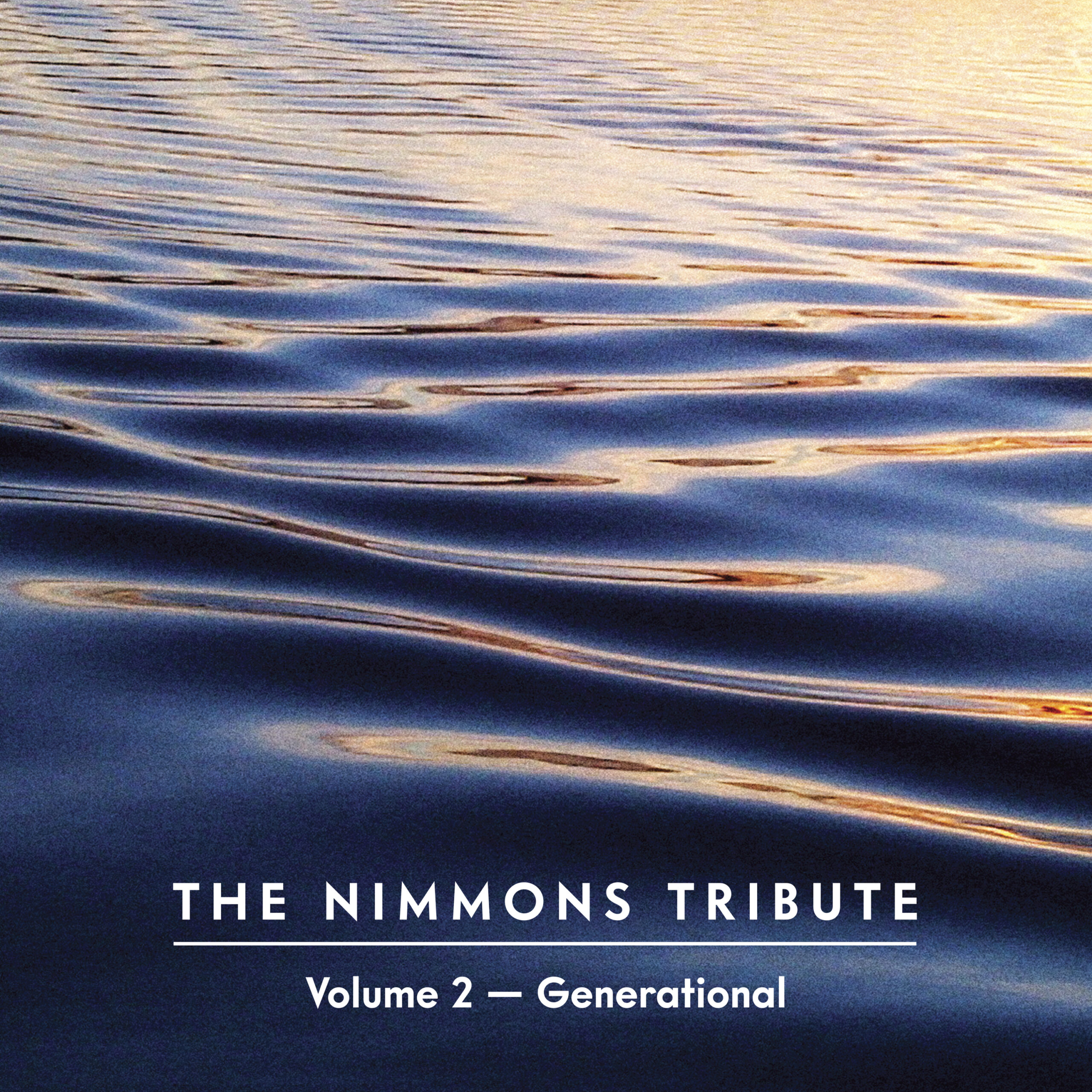
Web information: www.philnimmons.ca
This page also available in / Cette page également disponible en français

